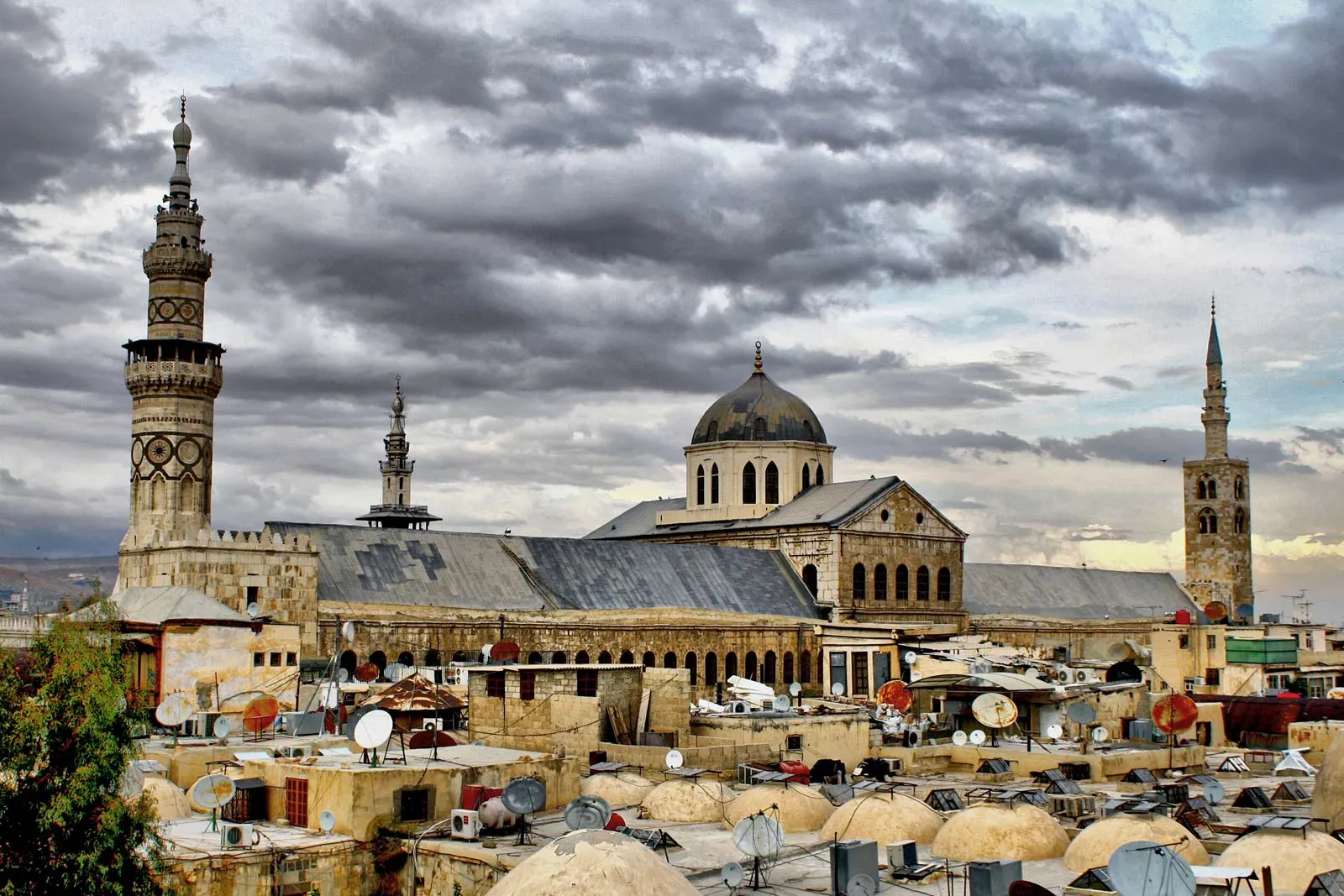Fragments of the propylon from the outer courtyard of the temple of Jupiter (left) and part of the Byzantine colonnade (right).
Damascus is first mentioned in the list of Syro-Palestinian cities found on the walls of the temple of Amun at Karnak, whose rulers were seized by Pharaoh Thutmose III (circa 1504-1450 BC) after the battle of Megiddo around 1482 BC. It is also found in the statue, found in the tomb of Amenhotep III (c. 1417-1379 BC), where several cities and states were in subordination to Egypt (or in friendly relations with it), also in the Amarno letters and in the tablet found at Kamid el-Loz (Kumidi) (14th century BC). According to these sources, Damascus in the 15th-13th centuries BC was within Egypt’s sphere of political influence. The land of Apum, in which Damascus was located, was at the centre of the conflict between Egypt, the Hittite state and the Mitanni state for the domination of Syria. The struggle between the Hittites and Egypt over Damascus and Apum during the reign of Amenhotep IV is discussed in four Amarna letters (AD. 53, 107, 189, 197). Damascus is mentioned twice in Genesis in connection with the accounts of the patriarchs (Gen. 14. 14-15; 15. 2). However, the attribution of these references to a specific historical epoch is a matter of debate among scholars.
History of Damascus
The date of the foundation of Damascus is lost in the centuries before our era. The medieval Arab historian Ibn Asakir (12th century) claimed that the first wall erected after the Flood was that of Damascus and attributed the rise of the city to the fourth millennium BC.
The earliest historical records of Damascus date back to the 15th century BC, when the city was ruled by the Egyptian pharaohs. During the 10th-8th centuries BC it was the centre of the Kingdom of Damascus. Damascus was then part of Assyria, the kingdom of Neo-Babylon, the kingdom of Israel, the kingdom of Persia and the empire of Alexander the Great, and the Hellenistic kingdom of Seleucus after his death.
In 85 BC Damascus was conquered by the Nabataeans, and in 64 BC the Roman general Gnaeus Pompey annexed it to the Roman Empire. It was the headquarters of the Roman legions fighting the Persians. A native of the city during this period (64 BC) was the Greek historian and peripatetic philosopher Nicholas Damascene (Greek Νικολαος Δαμασκινος).
In 395 the city became part of Byzantium.
The first Christians appeared in Damascus as early as the 1st century AD after the visit of the Apostle Paul.
From 661-750 Damascus was the capital of the caliphate of the Umayyad dynasty that stretched from the Indus to the Pyrenees. It was later ruled by Egyptian dynasties and in 1076 became part of the Seljuk Turks.
The Crusaders attempted to capture Damascus three times (1125, 1129 and 1148, the last time during the Second Crusade) without success. In 1154, the troops of Nur al-Din Zenga captured Damascus. After his death in 1174, Damascus passed into the hands of the Ayyubids. In 1260, the Egyptian Mamluks seized power in Damascus. The period of their rule was characterised by the flourishing of arts and crafts. Damascus steel and glass were exported to Europe.
In 1300, Damascus was sacked by the Mongols. They carried out such a massacre that, according to the Arab historian al-Maqrizi, “blood flowed like a river in the streets”. In 1400, Tamerlane destroyed the city to the ground. The best armourers and craftsmen were taken as slaves to Samarkand. When Damascus was occupied by the forces of the Turkish Sultan Selim in 1516, the city was still half in ruins.
Damascus became one of the provincial centres of the Ottoman Empire, known only as a transit point for pilgrims on the Hajj pilgrimage to Mecca.
After the conquest of Syria in 1833, Mehmed Ali made Damascus his temporary subject, but the sultan’s European allies returned it and Syria to Turkey (1840). From 9-16 July 1860, Damascus witnessed the terrible slaughter of Christians at the hands of the Druze.
Damascus was the administrative centre of the Mandatory Territory of Syria under French rule from 1920 to 1943 and became the capital of Syria after its independence in 1943.
Religion
The majority of the inhabitants of Damascus are Sunni. There are more than 2,000 mosques in Damascus, the most famous being the Umayyad Mosque. Christians make up 10% of the population and there are several Christian areas such as Bab Touma, Kassaa and Ghassani; there are many churches in the city. There is a small Jewish community. An ancient synagogue in the Jobar neighbourhood was destroyed by militants who invaded the area.
You may also like:

